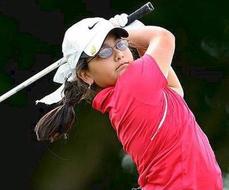 If you’re a golfer and not “living under a rock” the big news is a ten year old has qualified to play in the US Women’s Amateur Championship being played at the Country Club in Cleveland Ohio. Yes, a ten year old who shot a 70 (2 under)in sectional qualifying, has her own website and twitter account!! This youngster Latanna Stone not even a teenager yet has won over 100 tournaments and is coached by Charlotta Sorenstam (Annika’s sister). She stands 4’ 10” tall and is home schooled by her mother, structuring academics around her daughters golf schedule. This is quite the opposite of most young golfers who fit their golf around normal school hours. Since Tiger Woods burst onto the scene in the late 1990's, golfers at the highest level have been getting younger and younger. From Ty Tryon (US PGA Tour card at 17), to Ryo Isikawa winning on the Japanese tour at 15 years old, male golfers are getting better younger. And let's not forget that Michelle Wie played on the LPGA Tour as a thirteen year old or that Lydia Ko at 14 and Amy Yang at 16 (coached by my business partner Lawrie Montague) won major Women’s Professional Tour events respectively at very young ages. There seems to be no limits to the age a golfer can compete against the best in the world. Or is there... 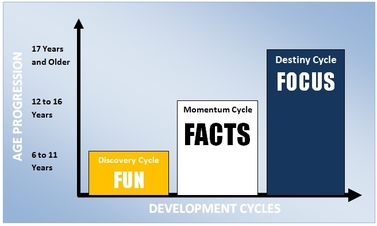 The question is not should they be allowed to compete at any age but is it long term healthy for the self development of the young golfer? Research data has shown it is not healthy and can lead to early burnout or dropout. Wall & Cote (2004). It has been my Co-Director Lawrie Montague and my belief and observation that there are three cycles all juniors have to pass through and missing or short cutting any one of those cycles has an adverse effect on the personal development of those juniors. The three cycles (see above right) can be categorised as Discovery (ages 6-11), Momentum (ages 12 -16) and Destiny (ages 17+). 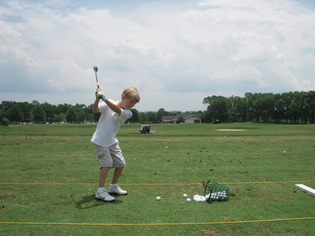 In the Discovery cycle (The Fun Cycle ages 6-11) the youngster should be allowed and encouraged to participate in as many sports as possible so they develop fundamental motor skills like running, jumping and throwing. This way they become athletes first. When involved in golf the training should resemble a “playground” and be fun. In the book “Driven” by Kevin Cook he examines life at the David Leadbetter Academy in Bradenton in Florida where young golfers have not played or sampled other sports and have specialised too early. The result is after leaving high school and they have not achieved the results they wanted so stop playing golf altogether and are lost to the game. At the Momentum cycle (The Facts Cycle ages 13-16) stage when the child reaches secondary or high school they gradually reduce participation in other sports. They start to learn effective practice and training regimes and the time is right for the parent to find a specialist PGA/LPGA golf teaching professional who has the skills to implement a structured and periodised program. The Destiny cycle (The Focus Cycle ages 17+) is the transition point when the junior commits to becoming an elite golfer and make golf his primary sport. All their free time is devoted to deliberate practice (3-5 hours per day). Full support from parents, coach, state and national association is vital in this cycle. 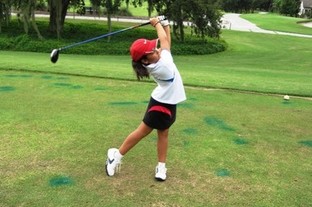 So what does this all mean for ten year old Latanna and others who will surely follow? There are calls to limit the age of golfers that wish to play in USGA events as they have on the LPGA Tour where the minimum age of 18 was set. But that was challenged when Morgan Pressell and Aree Song appealed and were given exemptions. It is my belief that these young golfers be given the opportunity to qualify and play in open events if they wish but still go back and play with other golfers of their age for the social interaction that is vital to develop a well balanced personality and self image. A good example is Michelle Wie who has had to retraced her footsteps and gone back to finish college to get life experiences that she has missed whilst trying to play against the men on the PGA Tour on a regular basis, especially when she had not won a tournament on the LPGA Tour As Kevin Cook’s conclusion in his book suggest's and which I agree with, don’t skip any of the three cycles or you will pay the price one way or another on or off the course. On another note, wishing both PTGC students Whitney Hillier and Tatiana Wijaya all the very best as they compete in the US Women’s Amateur Championship this week at the Country Club in Cleveland Ohio. All the best amateurs in the world will be there and after two rounds stroke play the top 64 qualifiers will go head to head in match play. Go get em girls! David Milne and Lawrie Montague - Pro Tour Golf College [email protected] 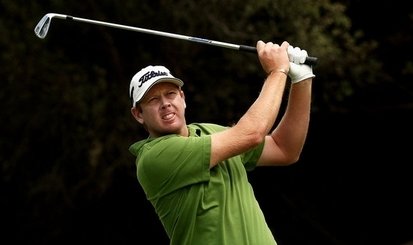 Steve Jeffress (Jeffro to his mates) has been playing golf competitively all over the world for 10 years and like many successful touring professionals he has had his fair share of up's and down's along the way. But 2011 this was a lot worse than that! Steve and I have worked together since 2002 mostly on developing his mental skills and practicing skills. I asked Steve to share his experience struggling to regain lost form of the past 15 months and what he discovered has helped him to regain his form and develop more confidence in himself and his game than ever before. Steve has just played himself out of one of the worst periods (performance wise) since joining the tour and has learned some valuable lessons that I thought would be helpful for any golfer who is experiencing a performance slump... I had a tough end to 2010 with my dad passing away in late November, and a couple of other family members passing away in January. I am still not sure if this had any impact on my bad golf, but I guess it would not have helped my mindset. I played the Volvo China Open in April and missed the cut by a shot. In the closing holes I hit some pull hooks which I was not very happy with. So at the end of the event, I sat down and thought to myself, if I want to compete in these events, I have to improve my technique and get rid of these shots. I had about 3 weeks off before my next 2 event stint in Korea. 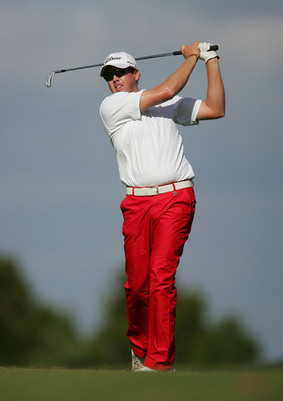 I worked my butt off on improving my club face angle and shot shape. I wanted to start to hit it left to right instead of right to left. This was I believe the start of my bad golf. I didn’t set out to damage my game but looking back now, you have to be very careful with the information you receive and act on. It felt good on the range and I could see some improvement on the camera. When I arrived in Korea my practice rounds and range work was all trying to move the ball left to right. It felt ok, but not great. I kept telling myself to stick with it and trust it. But under the gun I was still trying to hit it left to right, and missed a couple of shots way right. Now my normal miss was left. Suddenly I thought, where am I going to miss it?? My brain came up with the answer, I don’t know!! Now, instead of having a good idea where my bad one went, I had no idea which caused a massive “fight” in my brain. Half way through my 1st event my brain came to the decision that it didn’t know where it was going to go, so it didn’t want me to hit anything at all. So now, once one of the best ball strikers in Australia, I couldn’t swing through a wedge past my left hip. I was hitting 7 irons 70m right and left. On top of that, I felt like throwing up and was shaking so much that I couldn’t fill in a score card until the end of the round. It wasn’t real fun spending 5 hours a day feeling like this. I was close to giving up at the end of 2011. 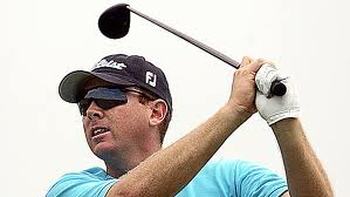 In February 2012 I started doing some self hypnosis and visualisation practice every day. What I couldn’t understand is that I was saying all the right things to myself on the course. "Trust it, commit, believe." But still my mind in the “heat of battle” I would think of only where I didn’t want the ball to go, instead of where I wanted it to go. But over months of consistent mental training, through which time I spent many hours picturing myself hitting great shots, shooting great scores and performing basic NLP techniques I learned from Lawrie on myself, my unconscious mind started to believe that I could hit the shots. At the start I was only occasionally hitting good shots, but that was a huge improvement from hitting none!! But these occasional good shots were very important, with my mind actually saying to itself, "maybe I CAN hit great golf shots." So over the last few months my belief has grown as strong or stronger than it ever has. For a lot of my professional career my belief and confidence has always been below the level of my ability. But now, since I have been down to what I call the bottom of professional golf, I see that it is important to have your belief and confidence, way above your skill level. Before every competitive round I spend time in a quiet place, picturing and feeling how good I can play. By the time I am ready to hit the course, I feel like a rugby league player running out onto the football field, pumped and ready to perform. I still hit bad shots and have bad thoughts. But there is a lot less of them now due to my belief in myself and my game. David and I wish Steve the very best of luck for the upcoming Australian tournament season and Japan Tour School. |
Archives
June 2019
|
Proudly Supported By
Copyright © 2011 - 2018 Pro Tour Golf College
Website Managed By Golf Performance Media
All Rights Reserved
Website Managed By Golf Performance Media
All Rights Reserved

 RSS Feed
RSS Feed



